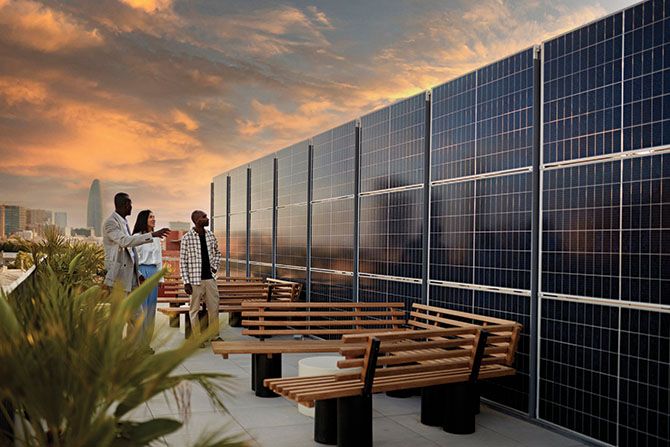I encourage every AIA member to continue to find ways to add expertise and to contribute best practices to address the best use of fossil fuels in producing renewable energy.
I want to thank every AIA Wyoming member for contributing to the success of our chapter over the last year. Our architectural industry and partners have supported each other, convened together at conferences, and financially provided resources to keep things moving. As a member organization, nothing surpasses our AIA membership participation as the ultimate
success metric.
AIA National has made a call for architects to act positively in their communities and act on behalf of the environment, with a particular focus on wind and solar as energy source alternatives to fossil fuels. Alternative is not the best term as it is more a function of the best usage of fossil fuels, as “Although wind and solar energy are clean alternatives once commissioned to burning fossil fuels, making the turbines and panels themselves have a negative environmental impact to balance.” (National Geographic)
AIA Wyoming is regionally located at the midpoint of this discourse of addressing the best use of fossil fuels in producing renewable energy, which took center stage with AIA National’s carbon-neutral goal. The AIA 2030 Challenge targets may be met by generating on-site renewable energy and/or purchasing (20% maximum) off-site renewable energy. This leads to a highly variable carbon footprint offsite, which may lead to inefficient usage of precious metals and fossil fuels unless a new holistic and tested approach to specifying and procuring renewable energy is enacted both by industry and by governance.
Eleven tons of coal are used as the raw material to produce the chemicals for the photovoltaic (PV) panel manufacturing process, which can last between 11 to 30 years. In addition, “solar PVs employ heavy metals such as cadmium, the mining of quartz sand, coating with ethylene-vinyl acetate, and photovoltaic solar cell fabrication requiring energy – most often derived from the burning of fossil fuels.” These resources and pollutants are offset by long-term benefits as even the most energy-intensive solar panel produced, of monocrystalline silicate cells, “emit just 55 grams (1.9 ounces) of pollution per kilowatt-hour – emitting only a fraction of the near one kilogram (2.2 pounds) of pollution emitted by a coal-fired power plant per kilowatt.” (Data from Solvoltaics & Thomas A Troszak)
At a broader level, the call to action by the AIA community will require a greater knowledge of renewables necessary for comprehensive project selection and specification. I encourage every AIA member to continue to find ways to add expertise and to contribute best practices to address the best use of fossil fuels in producing renewable energy. I hope that future discussions within the AIA Wyoming publication will describe a greatly improved and comprehensive path to carbon neutrality promoted by the AIA. While we have many issues to tackle over the coming years, this may be the best time to establish the architect’s place in the design and specification of energy production in the State of Wyoming.
Thank you!








